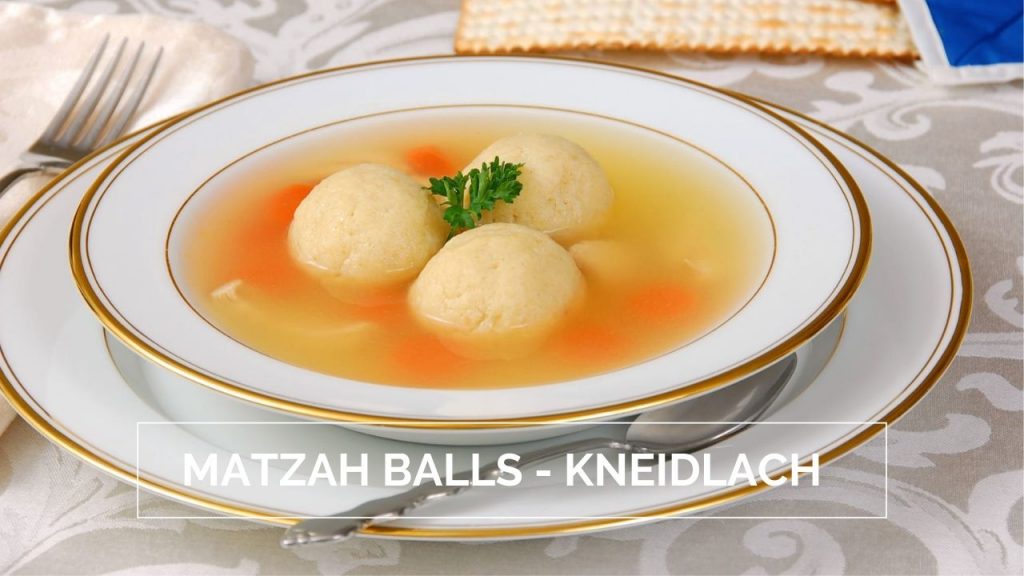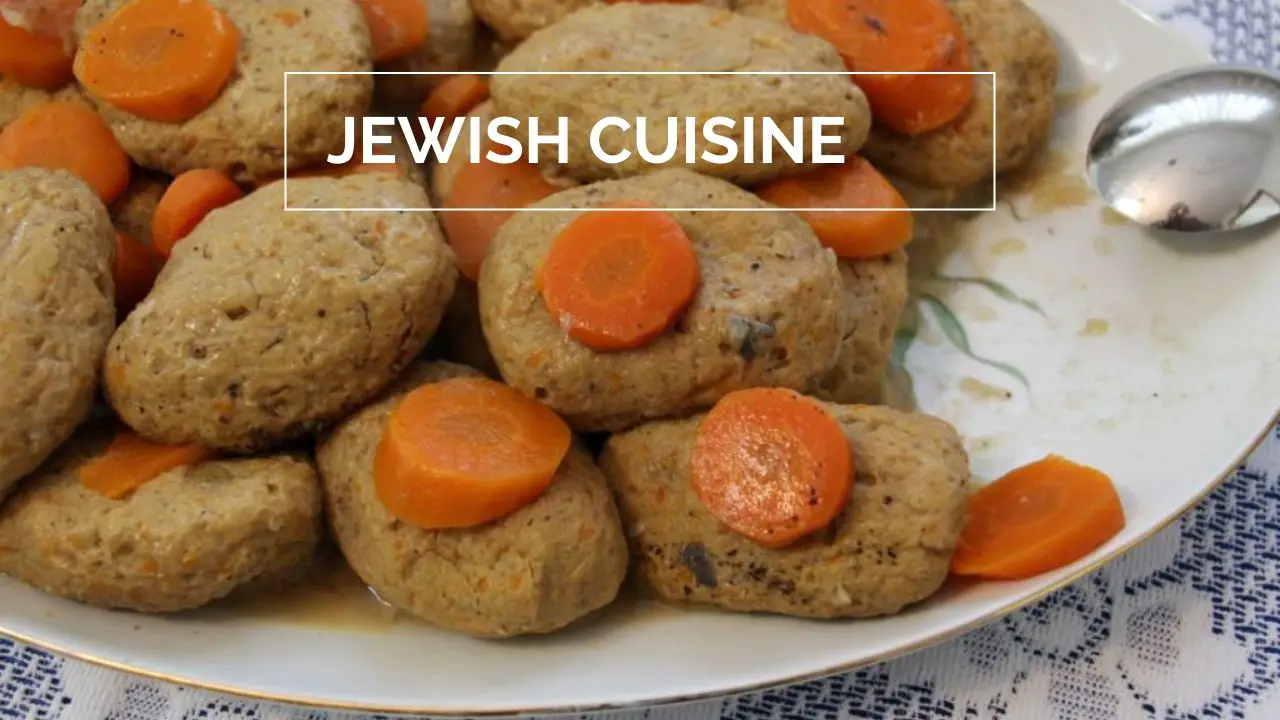Jewish Food History
More than any other aspect of Jewish culture, Jewish food has held the Jews together all these years. Food plays an important part in many cultures, and the Jews are no exception. For the Jewish culture, food frequently serves both ethnic and religious functions.
You’ve surely noticed all Jewish holidays and festivals, no matter how major or minor, have at least one thing in common—there is always a feast (seuda).
Technically, there probably is no such thing as “Jewish” cuisine. There is, however, food that is not Jewish because it is not kosher and no amount of preparation will change that.
Obviously, food that complies with the laws of kashrut or is prepared accordingly is Jewish food. That’s pretty much a no-brainer. Just as clearly kashrut has helped keep the Jews together during the Diaspora.
For example, if a Jew found himself in a strange town and he wanted to eat, he sought out a Jewish family or Jewish restaurant where he could have his meals. Even today, you will find sites on the Internet informing people about where they can have a kosher meal in various towns and cities.
Jewish Food From Multiple Cultures
Beyond the kosher element, Jewish food as a concept is really an amalgamation of many cultures. Many foods that can be considered “Jewish” are not exclusive to Jewish cuisine. Jewish food reflects the numerous places the Jews have lived over the centuries, including the influences of Middle Eastern, Spanish, German, Mediterranean, and Eastern European cooking styles. For example, hummus and falafel are common in much of the Middle East, stuffed cabbage is prevalent in Eastern Europe, and knishes are familiar to Germans as well as Jews.
Nevertheless, Jewish cuisine has developed a distinctive flair often applied to the foods and cooking techniques extracted from the lands in which Jews resided. A knack for economical cooking played its part here as well. In places where Jews were poor, particularly in the shtetls (small villages) of Eastern Europe, people had to make a few inexpensive ingredients go a long way, and this affected the manner of cooking.
Sephardic and Ashkenazic Jews differ culturally (and sometimes even in minor matters of religion) as a result of having lived for centuries in different areas of the world. Just as they have their own respective dialects, ways of speaking Hebrew, particular religious practices, and cultural customs, they also have different ideas about Jewish cuisine. Subject to Mediterranean influences, Sephardic Jewish cuisine is characterized by the use of spices, olive oil, rice, and lamb, whereas Ashkenazi Jewish cooking reflects the Central, Northern, and Eastern European countries in which Ashkenazim lived.
Jewish Cooking in America
For the most part, the food that Jews living in the United States generally consider “Jewish” corresponds more with Ashkenazi-style cooking. Some differences have been influenced by a slight American touch, while a few others have been created entirely in the Jewish-American tradition.
Much of the food Jews in America identify as “Jewish” stems from Ashkenazi cooking traditions, and this generally holds true regarding the fare mentioned in this point. Certain Jewish foods are associated with particular holidays because they are generally served on specific occasions. Of course, there is nothing wrong with serving these dishes throughout the year, which many Jewish families choose to do.
Matzah Balls – Kneidlach

In the Jewish tradition, food dishes made with matzah (a flat bread made from a simple mix of flour and water without any eggs) abound. While matzah doesn’t really have a flavor and is rather bland, some people do enjoy matzah all year round, eating it instead of crackers or bread. One good example is matzah ball soup, made of chicken broth and vegetables, like celery and carrots, with matzah balls floating in it. These matzah balls are known as kneidlach (Yiddish for “dumplings”).
Some people also like matzah soaked in water and egg and then fried. There is even a Passover variation of latkes (potato pancakes, which are served on Hanukkah) that are made out of matzah meal.
Cooking On The Sabbath
Cooking is forbidden on Shabbat. To solve the problem of having to eat cold food, the Jews of Eastern Europe invented cholent, a slowly cooked stew of beans, barley potatoes, and beef that can be started before Shabbat begins and then left to simmer.
The quintessential Jewish food item just might be the bagel. The word bagel is derived from the German beugel, which means “a round loaf of bread.” Bagels are often topped with sesame seeds, poppy seeds, or touches of other flavors. However, the addition of cream cheese and lox is a custom born in America.
Jewish Dishes Examples
The blintz is a popular Jewish food item. The word blintz is really what might be called “Yinglish,” because after Yiddish made its way to the United States, some English was incorporated into the language.
The Yiddish word is actually blintzeh (from the Ukrainian for “pancake”), but blintzes bear a closer resemblance to crepes than pancakes. A blintz is a flat pancake rolled around sweetened cottage cheese, mashed potatoes, jam, or fresh fruit and is frequently accompanied with sour cream or applesauce. Other common Jewish food items include the following:
- Borscht:Borscht is beet soup, served either hot or cold. Eastern European Jews borrowed the borscht recipe from their Gentile neighbors. This dish became especially popular with the poor, who could afford readily available beets. When eating borscht, people often add sour cream.
- Knishes: A knish is a potato and flour dumpling normally stuffed with mashed potato and onion, chopped liver, or cheese. In fact, the word knish is Ukrainian for “dumpling.”
- Kreplach: Another type of dumpling, triangular- or square-shaped kreplach (from the German kreppel) are similar to ravioli, contain cheese or meat, and are usually served in soup.
- Kasha:Kasha or kasha varnishkes is a mixture of buckwheat and bow-tie noodles. The term kasha comes from the Russian word for “porridge.”
- Kugel: The term kugel comes from the German word for “pudding.” The name is derived from the pan in which the pudding was baked and where it remained to be enjoyed throughout the Sabbath day. Kugel is either served as a casserole of potatoes, eggs, and onions, or as a desert made with noodles, fruits, and nuts in an egg-based pudding.
- Stuffed cabbage:Stuffed cabbage (also known as holishke, praakes, or galuptzi) can be prepared in a number of ways, including filling the cabbage with beef and then serving it in a sweet-and-sour sauce.
- Kishkas: The word kishka is derived from Russian and means “intestines” or “entrails.” Originally, kishka was just that—entrails stuffed with meat, flour, and spices. Today, the intestines have been replaced with parchment paper or plastic.
- Gefilte fish: The word gefilte comes from German and it means “stuffed.” Originally, gefilte fish was stuffed fish, but today it looks more like fish cakes or fish loaf. Gefilte fish may be made from a variety of fish, though it’s most often made of carp. The fish is chopped or ground, then mixed with eggs, salt, onions, and pepper, or a vegetable mix. Traditionally, gefilte fish is served with horseradish.
- Grivalach-a stuffed fish, filled with a mixture of chopped fish, eggs, onions, matzo meal or crumbs, and spices.
- Tzimmes– Another stew, a sweet one called tzimmes, consists of carrots, sweet potatoes, and/or prunes. Tzimmes is traditionally served on Rosh Hashanah and Passover.
A few typical Jewish dishes, like chicken soup, are known for their medicinal value. At the other extreme, however, there is schmaltz (chicken fat, fried with onion and garlic), which has surely clogged many arteries. Not far behind schmaltz on the list of foods guaranteed to raise cholesterol and fat levels are corned beef, pastrami, tongue, and chopped liver— all of which have been part of the American Jewish diet.
But times are changing, and people have become more health-conscious in their dietary habits. What’s more, there is also an increasing awareness of moral issues when it comes to eating animal products. Consequently, a number of Jewish vegetarian cookbooks contain traditional Jewish recipes without meat, fish, or fowl. Which just goes to prove that what is and what is not “Jewish food” has always been relative, and it probably always will be subject to change.


